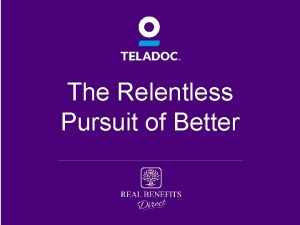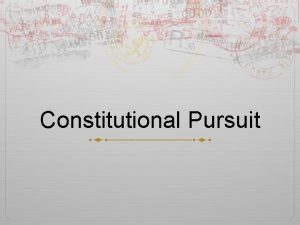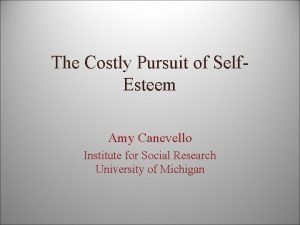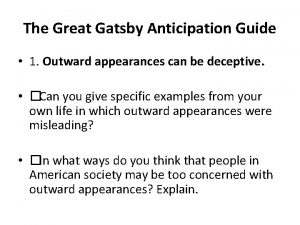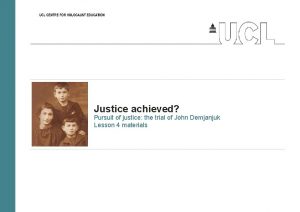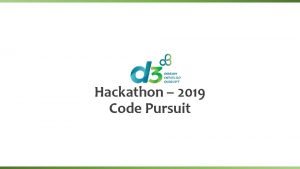IN PURSUIT OF JUSTICE In Pursuit of Justice














- Slides: 14

IN PURSUIT OF JUSTICE

In Pursuit of Justice • Part I of the report focuses on how law and justice systems can play a central role in achieving women’s rights. • Part II evaluates each of the Goals from a gender perspective, focusing on where country averages conceal marked disparities in outcomes between women and men, and between different groups of women.

Linking MDGs are interdependent • e. g. women’s lack of education is linked to poverty, ill-health, etc. , along with the transmission of intergenerational poverty. Often deprivation in one dimension will be accompanied by deprivations in others • For instance, (Grimm et al. , 2008) show that there exist sizable differences between the richest and the poorest quintiles in 13 developing and select OECD countries in life expectancy, income and education.

Inequalities tend to reinforce each other

Gender and the MDGs To build on the progress already made towards meeting the targets of the MDGs, it is increasingly important to focus on those left behind, especially the most excluded women and girls. This means looking not only at inter-group inequality (e. g. based on race, income, location), but also intragroup (e. g. sex).

Some misconceptions • Women and girls are not a group. Much heterogeneity between them. • Not all women and girls experience gender in the same way: Gender interacts with poverty, location, race etc. in a non-linear way. • As a result, there is much inequality between women and girls, some of it due to traditional markers of disadvantage, a lot of it due to different gender roles.

Some misconceptions

Example 1: Secondary school attendance

Net secondary enrolment (%) Example 1: Stop early marriage R 2 = 0, 4874 15 -19 ever married (%)

Example 2: Women’s access to health care

Example 2: More women providers needed Hiring women providers in remote areas helps Example 2: Women’s access to health care

Some key lessons: things that need monitoring • Are there gender sensitive legal frameworks in place (e. g. Negative correlation between legal age at marriage and rates of early marriage) • How many women in service delivery (e. g. Indonesia midwife in every village reduced MMR). • Addressing violence against girls in school. How prevalent is it? What preventive measures exist? • Etc. See POWW 2011/12 for further recommendations.

Post-2015? • Whatever comes after the MDGs must acknowledge structural inequities—sometimes state-sponsored– and skewed power relations. • e. g. Discriminatory laws must be removed; VAW and time poverty need to be addressed. These are as much a cause of deprivation as they are a consequence of it. • Current framework seriously lacking and underwhelming in terms of gender. Proper gender analysis must be a prerequisite for post-2015 agenda. • UN Women stands ready to engage and will push for regular data collection.

IN PURSUIT OF JUSTICE
 Making healthcare better
Making healthcare better Constitutional pursuit answer sheet
Constitutional pursuit answer sheet Goldwater extremism in defense of liberty
Goldwater extremism in defense of liberty Menin aeide thea
Menin aeide thea Maestra giulia
Maestra giulia Pursuit pp
Pursuit pp Educational pursuit meaning
Educational pursuit meaning Amy canevello
Amy canevello Pursuit of happiness poem
Pursuit of happiness poem Projection pursuit
Projection pursuit Outward guide
Outward guide Looking for richard analysis
Looking for richard analysis Motifs in chronicle of a death foretold
Motifs in chronicle of a death foretold Tight angle tackle
Tight angle tackle Ultimate pursuit objectives
Ultimate pursuit objectives
